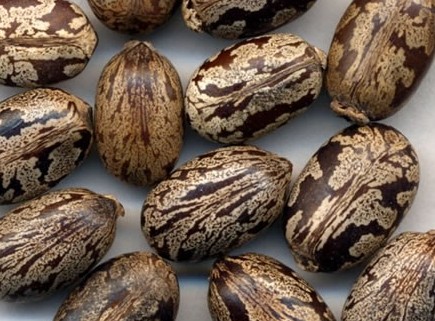Ricinus communis, the castorbean or castor-oil-plant,is a species of flowering plant in the spurge family, Euphorbiaceae.
Castor is indigenous to the southeastern Mediterranean Basin,Eastern Africa, and India, but is widespread throughout tropical regions (and widely grown elsewhere as an ornamental plant).
Castor seed is the source of castor oil, which has a wide variety of uses. The seeds contain between 40% and 60% oil that is rich intriglycerides, mainly ricinolein. The seed also contains ricin, a water-soluble toxin, which is also present in lower concentrations throughout the plant.
The glossy leaves are 15–45cm (5.9–17.7 in) long, long-stalked, alternate and palmate with 5–12 deep lobes with coarsely toothed segments. In some varieties they start off dark reddish purple or bronze when young, gradually changing to a dark green, sometimes with a reddish tinge, as they mature.
The flowers are borne in terminal panicle-like inflorescences of green or, in some varieties, shades of red monoecious flowers without petals.
The fruit is a spiny, greenish (to reddish-purple) capsule containing large, oval, shiny, bean-like, highly poisonous seeds with variable brownish mottling.
| 
|